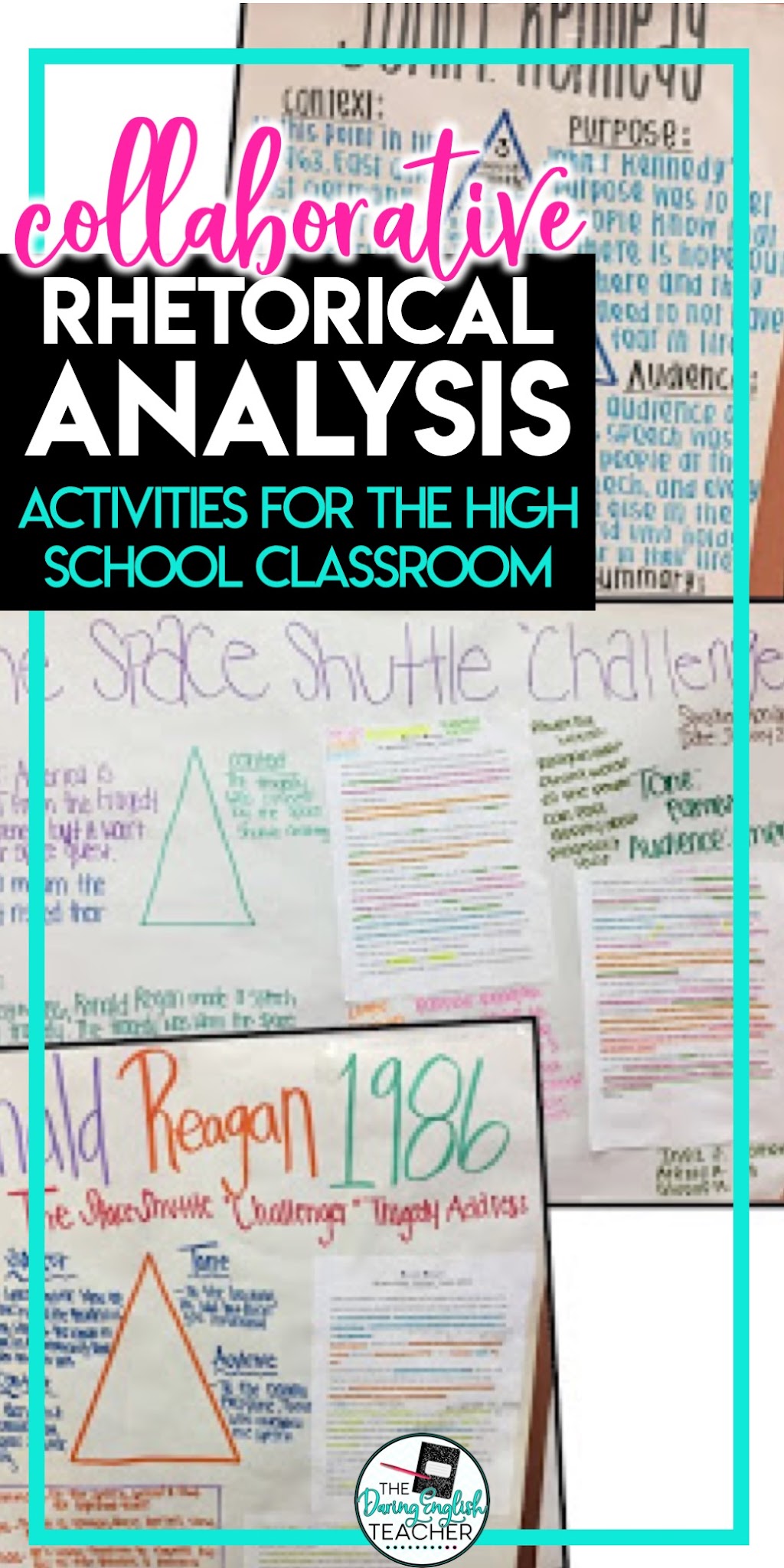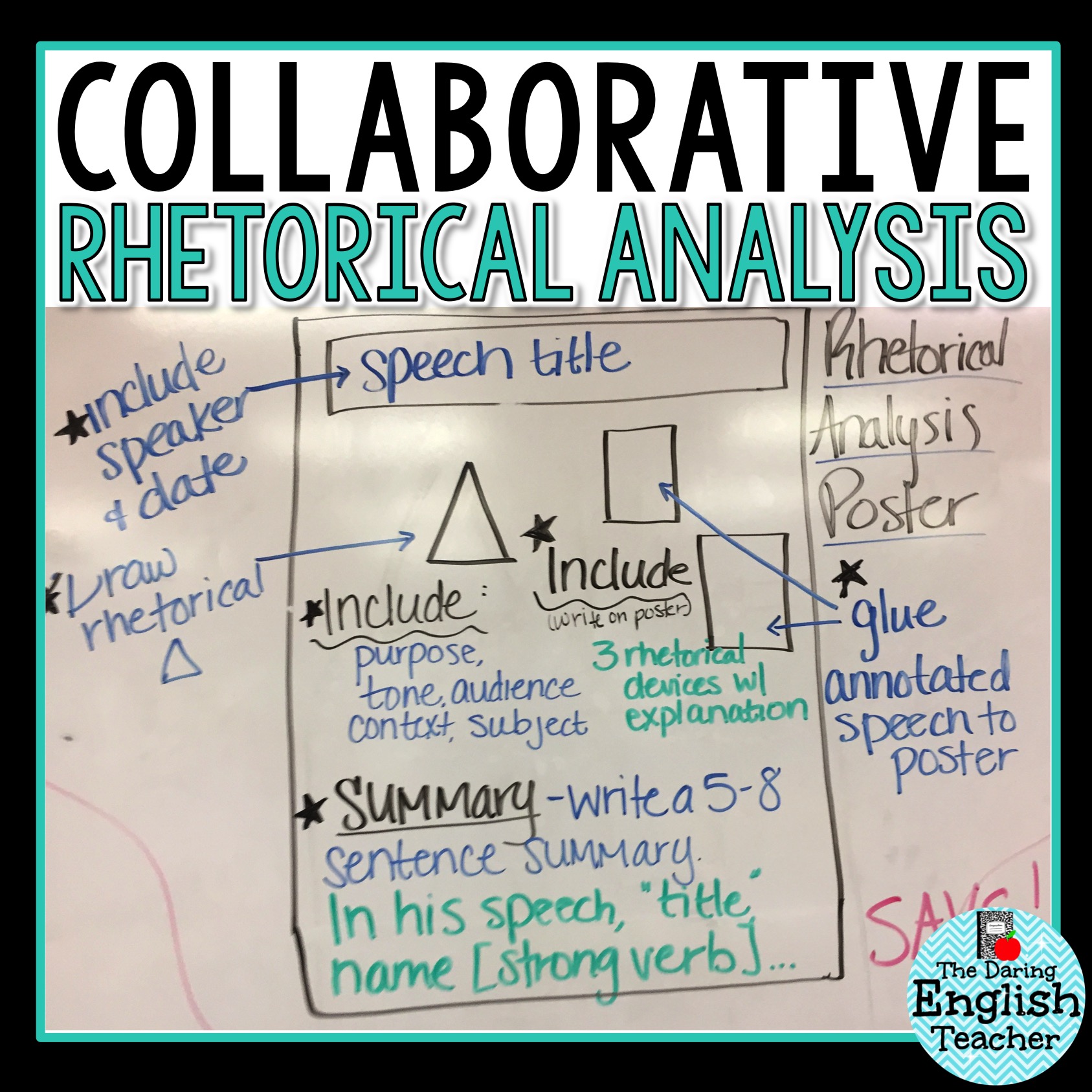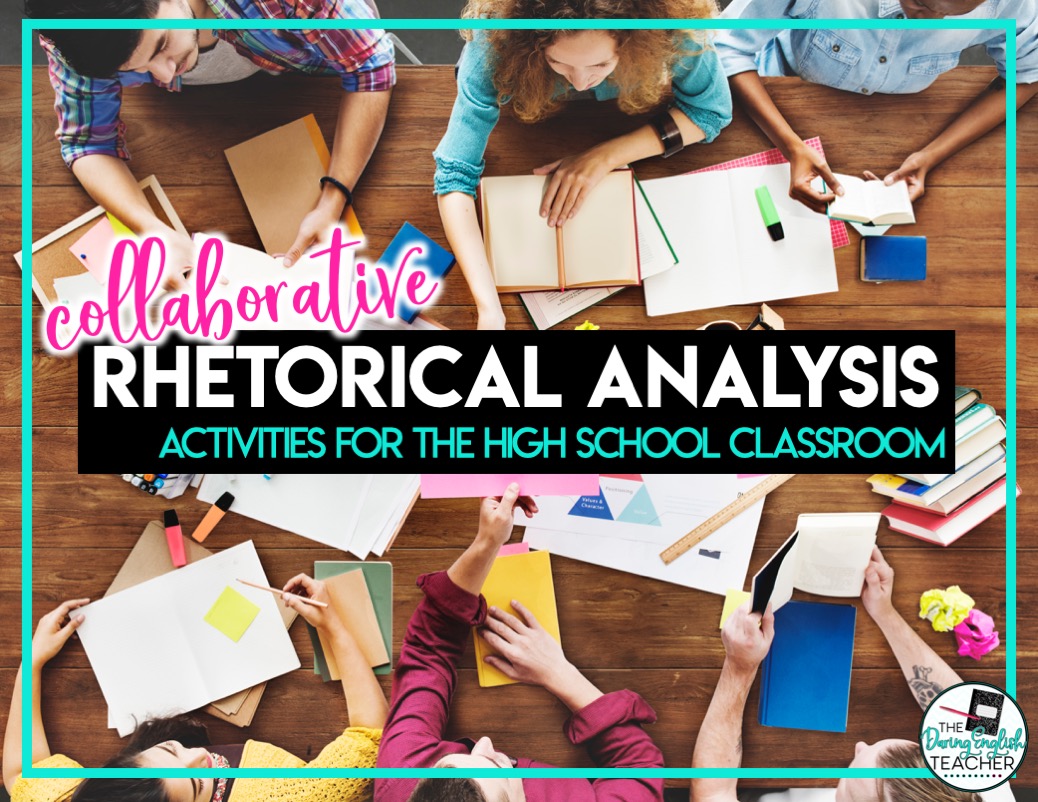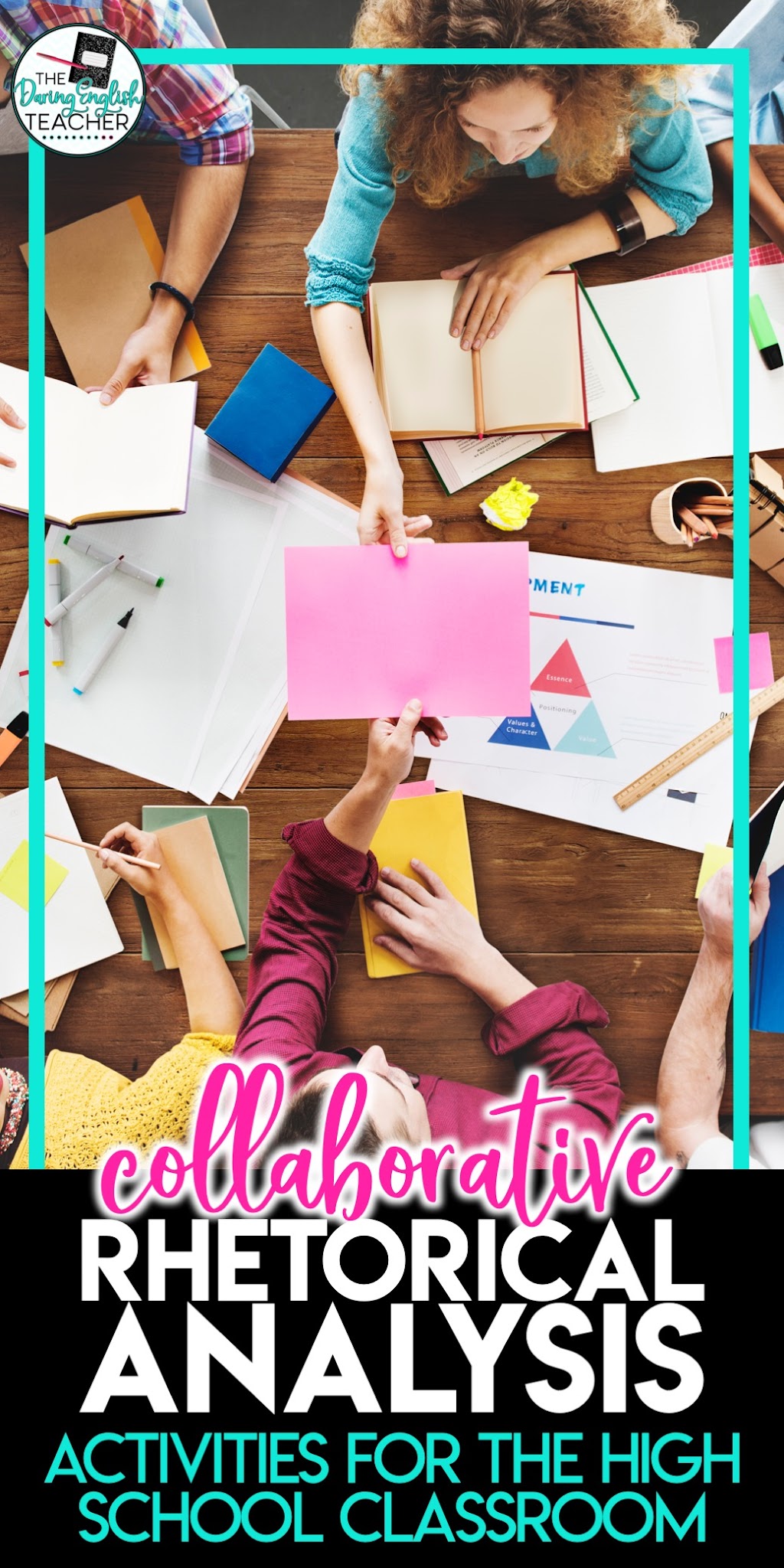If you are looking for a new rhetorical analysis activity, I’ve got just the thing for you: a collaborative rhetorical analysis poster project!
One of the things I love the most about teaching nonfiction texts is teaching rhetorical analysis and watching students get it. After teaching my students about ethos, pathos, logos, and a variety of rhetorical devices in two different speeches, I wanted to see if they got it on their own, so I assigned a collaborative rhetorical analysis project.
Getting Started: The Collaborative Rhetorical Analysis Poster Project 
To set up the project, I printed copies of historical and political speeches that we had not reviewed yet: The Space Shuttle Challenger Address, Dr. Martin Luther King Jr.’s I Have a Dream, President George W. Bush’s 9/11 Address to the Nation, and JFK’s Ich bin in Berliner. With the exception of I Have a Dream, all of the speeches are about the same length.
I printed out enough copies for each group to have one speech each, and then I collated the speeches so that I could hand them out at random. The students did not have a say in which speech they were given.
I gave each student group a piece of chart paper, markers, and a copy of the speech to annotate.
Using my whiteboard, I drew a mock-up, sample poster for the students with my requirements, and explained my expectations. In groups of three, students were to annotate the speeches, for literal and figurative meaning as well as rhetorical devices; identify the speech’s subject, purpose, author, context, and tone; write a 5-8 sentence summary of the speech, and include at least three rhetorical devices on the poster, with explanation.
The project took two and a half days, and it went better than I could have asked for. I heard dynamic conversations about the various authors’ use of ethos, pathos, logos, repetition, anaphora, alliteration, and allusion. I saw my students annotating their speeches and truly dissecting the text to gain a deeper understanding. I witnessed authentic learning take place.
On the third day of this project, we took half a day to display the posters and complete a gallery walk. For the gallery walk, I asked each student to write down the title and speaker of each speech and then identify one rhetorical device that the speaker used and explain its significance and overall impact on the speech.
Why The Collaborative Rhetorical Analysis Poster Project Works
 One reason why I think the activity exceeded my expectations is that my students were ready to demonstrate their understanding. Prior to this activity, I taught my students this lesson: It covers the three rhetorical appeals and various rhetorical and persuasive strategies. We used Lou Gehrig’s Farewell to Baseball speech as an introductory text.
One reason why I think the activity exceeded my expectations is that my students were ready to demonstrate their understanding. Prior to this activity, I taught my students this lesson: It covers the three rhetorical appeals and various rhetorical and persuasive strategies. We used Lou Gehrig’s Farewell to Baseball speech as an introductory text.
Another reason why I believe my students did so well with this activity is that I also taught them how to annotate text. Using my Annotating Made Easy lesson, I taught my students how to annotate text in a step-by-step manner. As a class, we broke down the Gettysburg Address and annotated it.
After students annotated small chunks of the text, I had them share their annotations with their table partners and then I showed them some of my annotations. This helps build up their confidence in annotating text. We then spent another day analyzing this speech for rhetorical appeals and devices in the same manner.
I definitely suggest walking through two to three speeches as a class before completing this collaborative rhetorical analysis poster project.
This was a new activity in my classroom, and it will be one I continue to use and tweak throughout the years.
Resources for Teaching Rhetorical Analysis
Annotating Text Made Easy
Ethos, Pathos, Logos, and Argumentative and Persuasive Strategies
Martin Luther King Jr. “I Have a Dream” Close Read and Rhetorical Analysis




3 Comments
What grade level was this for? I teach 7th and I think it would be perfect minus the allusions and anaphora which is more 8th grade standards. Otherwise, nice!
Hi Vanessa,
I did this activity with my juniors, but I think you could totally adapt it for the middle grades. Like you said, just take out allusions and anaphora and it should work. It might help if you walk through a couple literary devices with your students first.
I’ve started this unit and I absolutely love it.